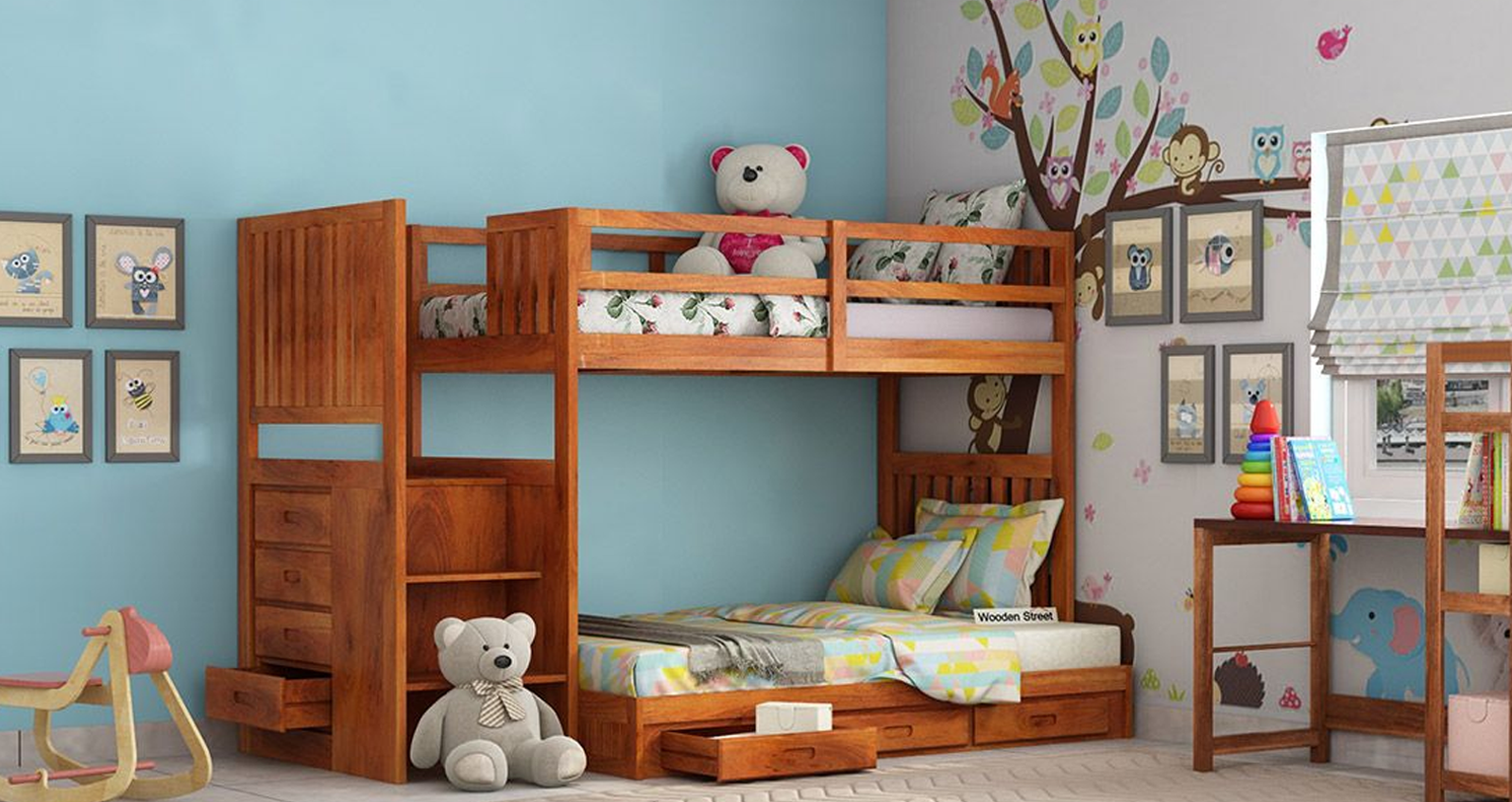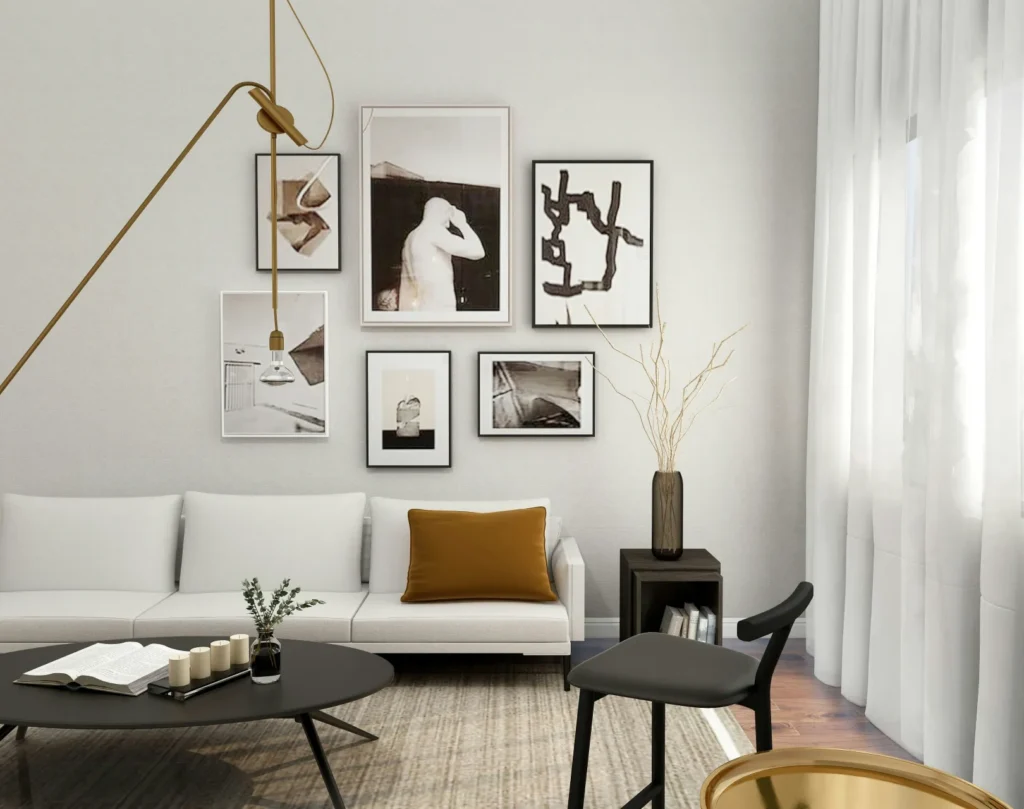1. Make the layout as functional as possible. Making the most of the available space by designing a layout is the first step in designing a contemporary children's bedroom. Zoning the Space: Set aside specific spaces for playing, studying, and sleeping. Compact Furniture Placement: To clear up floor space, place workstations or beds in wall …
1. Make the layout as functional as possible.
Making the most of the available space by designing a layout is the first step in designing a contemporary children’s bedroom.
Zoning the Space: Set aside specific spaces for playing, studying, and sleeping.
Compact Furniture Placement: To clear up floor space, place workstations or beds in wall corners.
Open Floor Plans: To promote unrestricted movement or play, keep the middle portion of the space vacant.
2. Select a Bed with Multiple Uses.
Modern children’s bedrooms must feature beds with built-in storage.
Platform beds: Beds with drawers below offer lots of room for linen, clothing, or toys.
Bunk Beds: For shared rooms or siblings, choose bunk beds with built-in storage or compartments.
Loft Beds: With a loft bed and a study or play room underneath, you may create a place that serves two purposes.
3. Use Integrated Storage Options.
In addition to saving room, built-in furniture gives a room a sleek, contemporary look.
Wall-to-Wall Shelves: Build a wall that resembles a library with movable shelves for décor, toys, and books.
Installing a comfortable window seat with concealed storage underneath is a great idea.
Closet organizers: To optimize storage, use modular closet systems with hanging rods and pull-out drawers.
4. Make Use of Ingenious Storage Furniture.
For contemporary children’s bedrooms, furniture that doubles as storage is perfect.
Storage ottomans: Offer places to sit as well as concealed spaces to keep small objects.
Foldable Desks: To increase play space, employ desks that can be folded up when not in use.
Toy Chests: Chic toy chests that have padded tops double as seats.
5. Select Storage for Smart Walls.
In children’s bedrooms, vertical space is frequently underutilized.
Pegboards: Hang toys, art supplies, or accessories from pegboards.
Wall Pockets: To keep books and toys, use fabric or plastic pockets that are hung on the wall.
Floating Shelves: Include floating shelves for ornamental objects, literature, or awards.

6. Use Modular Design.
The adaptability of modular furniture allows it to grow with your child.
Adjustable Beds: Investing in beds that can grow with your child is a wise long-term decision.
Stackable Storage: You can change the arrangement as needed with modular shelves and bins.
Furniture that can be converted from a crib to a toddler bed or from a desk to a play table should be taken into consideration.
7. Select a Study Space That Saves Space.
Every child’s room needs a small yet useful study area.
Wall-Mounted Desks: To conserve space, use desks that are wall-mounted or foldable.
Integrated Storage: School supplies are kept organized using desks that have drawers and sections.
Whiteboards and cork boards: Place boards for scheduling, notes, and art exhibits above the desk.
8. Include Playful Toy Storage.
Use imaginative ideas for games and toys to make storage enjoyable.
Use storage bins with a theme, such as bins shaped like automobiles, animals, or your favorite characters.
Rolling Carts: Use easily transportable rolling carts to store toys.
Hanging Nets: To store lightweight toys or plush animals, hang nets in a corner.
9. Select a Palette of Light and Airy Colors.
A little bedroom may feel roomy and welcoming with the correct color scheme.
Neutral Base: To generate a feeling of openness and brightness, paint the walls in white, beige, or pastel hues.
Pops of Color: Use accent walls, curtains, or bedding to add vivid colors.
Themed Décor: Coordinate colors with your child’s preferred theme, like a forest or space.
10. Customize the Space.
Your child’s personality should be reflected in their contemporary kids’ bedroom.
Customized Wall Art: Use framed pieces of art that reflect their interests, murals, or decals.
Name Signs: For a distinctive touch, add monogrammed pillows or personalized nameplates.
DIY Projects: To give the room a truly unique feel, let your kids help with DIY décor projects.
11. Make Strategic Use of Lighting.
The mood and functionality of the space can be improved by the lighting.
Task Lighting: Install concentrated lighting over the reading nook or study desk.
Soft Nightlights: To create a comfortable resting atmosphere, use warm, dimmable lights.
Pendant or String Lights: To create a mystical atmosphere, use creative lighting fixtures.
12. Make the Most of Floor Space.
Kids can play and move about freely when there is free floor space.
Use play mats that are foldable so they may be stowed when not in use.
Select furniture with concealed storage, such as coffee tables or benches.
Minimalist Design: To maintain the space open, do not pack the room with too much stuff.
13. Incorporate Features That Are Growth-Ready.
As your child’s demands change throughout time, the room should be designed to accommodate them.
Extensible Storage: Make use of solutions that are modular or extensible.
Invest in furniture with classic styles that will look good as your child gets older.
Multi-Age Décor: Update items as necessary while maintaining a basic décor style.
Conclusion: style does not have to be sacrificed when designing a contemporary children’s bedroom with clever storage options. You may make a home that is both useful and enjoyable for your youngster with careful design and astute furniture selections. Every element, from beds with secret spaces to inventive wall storage, can help create a space that develops with your child while remaining fashionable and well-organized.







